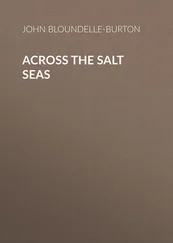John Bloundelle-Burton - The Hispaniola Plate
Здесь есть возможность читать онлайн «John Bloundelle-Burton - The Hispaniola Plate» — ознакомительный отрывок электронной книги совершенно бесплатно, а после прочтения отрывка купить полную версию. В некоторых случаях можно слушать аудио, скачать через торрент в формате fb2 и присутствует краткое содержание. Жанр: foreign_antique, foreign_prose, на английском языке. Описание произведения, (предисловие) а так же отзывы посетителей доступны на портале библиотеки ЛибКат.
- Название:The Hispaniola Plate
- Автор:
- Жанр:
- Год:неизвестен
- ISBN:нет данных
- Рейтинг книги:4 / 5. Голосов: 1
-
Избранное:Добавить в избранное
- Отзывы:
-
Ваша оценка:
- 80
- 1
- 2
- 3
- 4
- 5
The Hispaniola Plate: краткое содержание, описание и аннотация
Предлагаем к чтению аннотацию, описание, краткое содержание или предисловие (зависит от того, что написал сам автор книги «The Hispaniola Plate»). Если вы не нашли необходимую информацию о книге — напишите в комментариях, мы постараемся отыскать её.
The Hispaniola Plate — читать онлайн ознакомительный отрывок
Ниже представлен текст книги, разбитый по страницам. Система сохранения места последней прочитанной страницы, позволяет с удобством читать онлайн бесплатно книгу «The Hispaniola Plate», без необходимости каждый раз заново искать на чём Вы остановились. Поставьте закладку, и сможете в любой момент перейти на страницу, на которой закончили чтение.
Интервал:
Закладка:
John Bloundelle-Burton
The Hispaniola Plate / (1683-1893)
" We passed the tropics, as near as we could guess, just where the famous Sir William Phips fished up the silver from the Spanish Plate wreck ." -
Defoe ("Colonel Jack").Most of the maps of the West Indies published during the first half of the present century and anterior to that date mark distinctly the spot where the following story principally takes place. Thirty miles due north of Cape Français, on the north coast of San Domingo, is a reef entitled "Bajo de la Plata, or Phips's Plate," while more modern maps simply describe it as "Silver Bank."
This is, of course, the spot where Sir William Phips-a now forgotten figure in history-obtained the plate mentioned by Defoe; and, so far as I am aware, there is but one detailed account in existence of how he found and secured that plate. This account is contained in a duodecimo volume entitled " Pietas in Patriam : the Life of Sir William Phips," published in London in 1697 anonymously, but guaranteed as accurate by several people who knew him. A production entitled "The Library of American Biography," edited by one Jared Sparks, also professes to give an accurate biography of Phips, but it is simply a garbled and mangled copy of the London publication. I should also mention that the "Biographia Britannica" refers to the expedition in the article on "Christopher Monk, second Duke of Albemarle." So does a work of the last century entitled "The Lives of the Admirals," by Lawrence Echard, and so also do some encyclopædias; but all of them undoubtedly derive their information from " Pietas in Patriam ."
This work I have myself carefully followed, because in it alone are to be found the descriptions of the "Frygate Algier Rose," her eighteen guns and ninety-five men, of the various mutinies, of Alderly's arrival on the scene, of the second voyage with the tender, and so forth. Indeed, beyond the requirements of fiction the account is absolutely an account of what happened until the chase after Alderly by Nicholas Crafer, when fiction itself becomes predominant. Alderly, I should add, was as real a character as Phips himself. So was the carpenter who discovered the second mutiny. The rest, with the exception of the Duke of Albemarle, are imaginary.
I may add, in conclusion, that "The Hispaniola Plate" appeared originally in The St. James's Budget .
Nothing is more notable in recent literature than the sudden renewal of interest in the historical novel. Mr. Stanley Weyman is the most successful of this group of younger writers, but there is now treading on his heels another young novelist, whose work shows such splendid promise as well as such remarkable achievement, that he bids fair to outstrip Mr. Weyman and come first to the goal. This is Mr. John Bloundelle-Burton, whose story, "The Desert Ship," created such a stir in London a short time ago.
Mr. Burton was born in 1850. His parents intended him for a military life, but when at twenty-one he came into a comfortable inheritance, he determined to see something of the world. Already familiar with the Continent, he turned to fresher pastures and came to Canada; then running over the border into the "States," he lived down South for a considerable period. In Baltimore he first contracted the writing habit, sending an article to a paper there, which accepted it with thanks, but with nothing else. While down South he fell in with "Red Cloud," an Indian chief, picking up much information that was strange and new, and that was later to be utilized in "The Desert Ship." Going back to England, he flitted between London and Paris, the latter being his favorite abode. In the Place de la Madeleine he lived with a company that contained representatives of every class and country. Describing them Mr. Bloundelle-Burton says: "One of our number was a Scotch duke; another a tailor's son, enormously rich and not a bad fellow; another a Spahi, home on leave from Africa; a fourth a Spaniard, rolling in money; another an American, who afterward died in prison while awaiting his trial for killing-absolutely killing-a man in a duel. They could not get over that in Paris; indeed, as a Frenchman said to me, it really looked as if the American had fully intended to murder his countryman."
Living in this way in Paris, our author began to write more and more; first for foreign papers, then for English ones. He began a connection with Galignani, which lasted intermittently for a long interval, and brought him acquaintance with many notable men, among them Jules Grévy, several years later President of the Republic. His next venture was sending English papers news from different popular resorts on the Continent-Switzerland and the Tyrol, Italy and the Riviera. Later on he helped edit a paper called The American Visitor , which told rich Americans where they could spend their money most rapidly, and where they had the best opportunity for catching a glimpse of fashionable society in England and on the Continent.
Mr. Burton's first long story was "The Silent Shore," which had quite a career under several different guises. Originally published in volume form, it later appeared as a play at the Olympic Theater, then ran as a serial in Spanish in a South American paper, and ended up as a serial in several English provincial papers. His next story was, "His Own Enemy," in the author's opinion, the best novel he has yet produced, "though not, I hope, the best I shall write," he adds.
"The Desert Ship," Mr. Burton's next book and the first to bring him genuine fame, was published by Hutchinson & Co., in London. It was received with a burst of praise from the critics, even Mr. Labouchere's sarcastic and hard-to-please paper, Truth , declaring it to be "an enthralling story and a book which will mark a period in the existence of anyone who is fortunate enough to get it. It is," the paper added, "as exciting as anything Verne ever wrote, and with the reality of Robert Louis Stevenson." Nothing succeeds like success, as Mr. Burton rapidly learned; editors with orders up their sleeves dropped in upon the rising young author, and he found it hard to satisfy all the demands made upon him. All this solicitation for the work of his pen resulted in a sudden literary output. Two stories appeared in quick succession: "The Gentleman Adventurer," which ran in Young England , and "The Adventures of Viscount Annerly," which was published in the People .
"The Hispaniola Plate," Mr. Burton's last and strongest book, is a semi-historical story. The scene is laid in the West Indies. The two principal characters belong to the Royal Navy, one living in Cromwell's, Charles II.'s and James II.'s reigns, the other in the present day; and the way in which the two periods are blended into the one book exhibits masterly skill. Mr. Burton is a passionate lover of the sea. Descended from a line of ancestors that acquired fame in the British Navy-his grandfather, Lieutenant Jermy, was a noted old commander of English ships and participated in the battle of New Orleans in 1814-he has in his blood a taste for the salt sea wave, and this gives his stories their breezy, out-of-door atmosphere.
Mr. Burton has a pleasant home just out of London at Barnes Common. Like so many other Englishmen of prominence in these days, he is married to an American woman. He is a large, broad-chested man, standing six feet, two inches and a quarter, in his shoes, with dark, piercing eyes. Mr. Burton has decided views about the true methods for literary work. He does not believe in fixing on a good subject for a novel, then selecting a picturesque period, and, after making yourself thoroughly acquainted with the manners and customs of that epoch, planting your characters in it, as is the habit of certain novelists. The story must come to you, you cannot go out and bring it in. "I never think," he says, "of producing a story laid in a period (or about persons) which I have to read up-to 'mug' up, as we used to say at school. But I have been an ardent reader of history and memoirs all my life, and the story arises naturally from periods and incidents with which I am well acquainted."
Читать дальшеИнтервал:
Закладка:
Похожие книги на «The Hispaniola Plate»
Представляем Вашему вниманию похожие книги на «The Hispaniola Plate» списком для выбора. Мы отобрали схожую по названию и смыслу литературу в надежде предоставить читателям больше вариантов отыскать новые, интересные, ещё непрочитанные произведения.
Обсуждение, отзывы о книге «The Hispaniola Plate» и просто собственные мнения читателей. Оставьте ваши комментарии, напишите, что Вы думаете о произведении, его смысле или главных героях. Укажите что конкретно понравилось, а что нет, и почему Вы так считаете.












